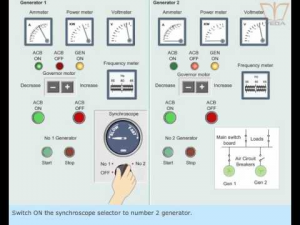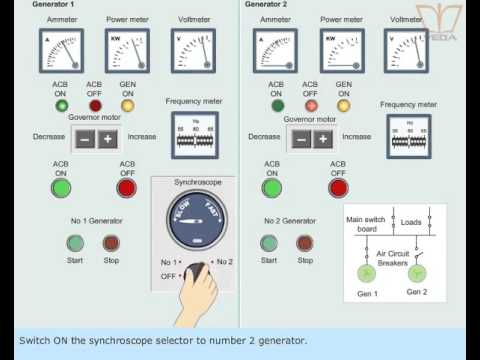In the maritime world, maintaining a reliable and steady power supply is paramount to ensure the safety and functionality of the ship. The electrical power system on board most vessels is generally served by two or more generators to fulfill the electrical load requirements and ensure redundancy. Synchronization of these generators is a crucial aspect that ensures the seamless power supply. This article aims to provide an in-depth understanding of the processes and considerations associated with generator synchronization on ships.
Understanding Generator Synchronization
Generator synchronization is the process of matching the voltage, frequency, phase sequence, phase angle, and waveform of a generator or alternator with an already operating power system, be it another generator or the grid. This alignment is indispensable when multiple generators operate in parallel, catering to inconsistent electrical loads that vary with time and demand.
Structure of a Synchronous Generator
The synchronous generator plays a vital role in this process. It comprises a rotor and a stator, where the rotor carries an electromagnet that rotates within the stator. The stator houses windings, inducing a 3-phase voltage. It comprises three stationary coils, commonly referred to as stator, armature, or phase coils. Calculating the synchronous speed of the generator is achieved using the formula Ns = (120 * f) / P, where Ns is the synchronous speed (rpm), f is the frequency (Hz), and P is the number of poles.
Requirements for Synchronization or Paralleling of Generators
Before diving into synchronization methods, it’s essential to know the prerequisites for a successful paralleling operation:
- Phase Sequence: The phase sequence of the incoming alternator must match that of the bus bar.
- Voltage Magnitude: The incoming alternator’s RMS voltage should be identical to the bus bar’s RMS voltage.
- Frequency: The frequency of the incoming generator should be the same as that of the bus bar.
- Phase Angle: There should be no phase angle between the incoming generator voltage and the voltage of the bus bar.
Methods for Synchronizing Generators on Ships
Four primary methods can be used to synchronize generators on a ship: the Synchroscope Method, the Emergency Synchronizing Lamps or Three Bulb Method, Two Bright and One Dark Lamp Method, and Auto Synchronization.
- Synchroscope Method: A synchroscope is used to check the frequency difference between the generators and the grid. When the pointer on the synchroscope approaches 12 o’clock, the incoming machine is in phase with the bus bar. This method, though costly, is more accurate and nearly eliminates human judgment error.
- Emergency Synchronizing Lamps or Three Bulb Method: This is employed when the synchroscope fails. The flickering rate of the lamps, connected between the phases of the bus bar and the incoming generator, determines the frequency difference. The downside to this method is that it doesn’t provide information on alternator frequency in relation to bus bar frequency.
- Two Bright and One Dark Lamp Method: Similar to the previous method, it helps to ascertain whether the alternator frequency is lower or higher than the bus bar frequency.
- Auto Synchronizer: With technological advancement, automatic synchronizing systems, capable of controlling the speed of the generator, managing the voltage and phase angle, and closing the circuit breaker at the appropriate moment, have become commonplace on ships. They reduce human error and ensure a quicker and smoother transition from one generator to another.
- Check Synchronization: This manual method requires the incoming generator to be slowly brought up to the speed and voltage of the bus-bar or online generator, then the circuit breaker is closed.

Considerations when Synchronizing Generators on a Ship
Synchronization is an important procedure in the operation of generators, especially on a ship where there are multiple generators operating simultaneously. When done properly, it can ensure that the generators are working efficiently and safely.
However, it’s important to note that synchronization is not a one-time event. Even after generators are initially synchronized, they must be constantly monitored and adjustments made as necessary. This is due to the fact that loads on the ship may change over time, which could cause the parameters of the generators to drift out of alignment.
Furthermore, it’s crucial to have trained personnel who are familiar with the procedure and understand the importance of synchronization. A mistake in the synchronization process can cause significant problems, including damage to the generators and other electrical equipment, and potential power outages.
In conclusion, the synchronization of generators on a ship is an essential task that requires a thorough understanding of the equipment and the procedure. It’s important to use the appropriate method for the situation, and to constantly monitor and adjust the system to ensure the generators are operating in a synchronized manner.

